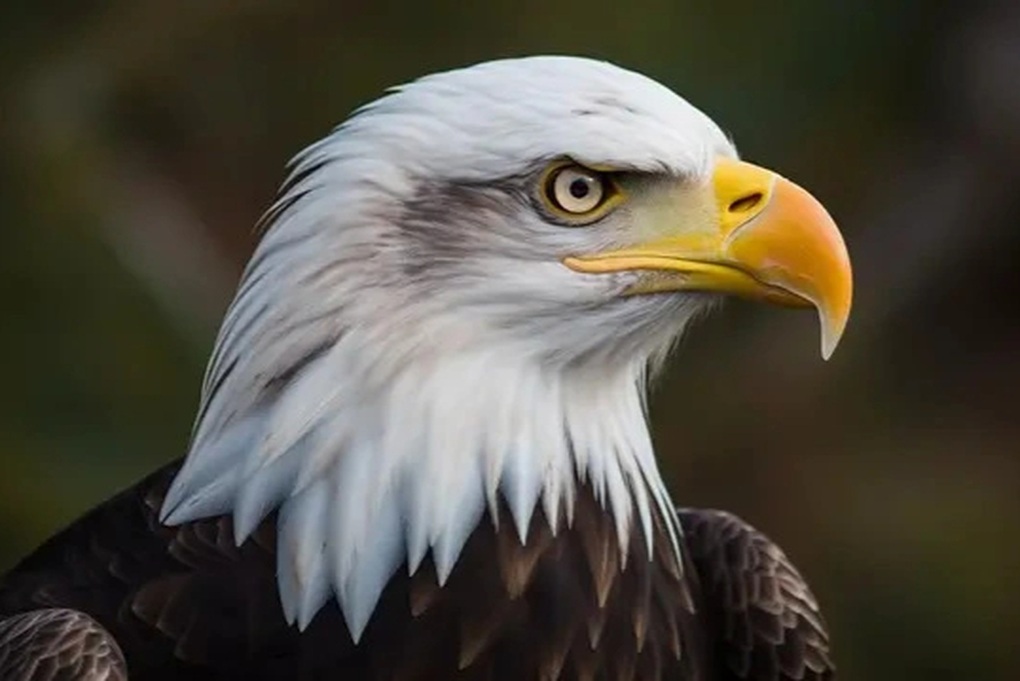The vision of eagles, mantis shrimps and flies all surprise scientists with their supernatural abilities that seem to only exist in science fiction movies.
Eagles are often considered the “kings of vision” in the animal world . However, if we consider each aspect, from resolution, distance vision, image processing speed to color recognition, the species with the most “divine” eyes are the smallest and least noticed creatures.
Eagles can see objects clearly from very far away.

Eagles have eyes that can see objects 3-5 times better than humans (Photo: Getty).
Birds of prey such as eagles, hawks and falcons can see objects 3–5 times further away than humans. If you had eyes like an eagle, you could easily read a newspaper headline from hundreds of meters away.
Their eyes are unusually large for their body size, containing an extremely high density of photoreceptors, which increases image detail and resolution. However, because the eyes are located at the front, they have a narrower field of view.
This is a disadvantage compared to species like horses or deer, which have almost panoramic vision.
Mantis shrimp see both ultraviolet and polarized light.

Mantis shrimp see the world in a way that humans can hardly imagine (Photo: Getty).
In the depths of the ocean, the mantis shrimp, a tiny crustacean that lives in coral reefs, possesses incredibly colorful and complex vision.
Humans have only three types of color-sensing cells (red, green, blue), while mantis shrimp have up to 12 types.
Some of them are also sensitive to ultraviolet rays, which are completely invisible to the human eye. In particular, they have the ability to distinguish polarized light, helping to identify objects, prey or enemies with high accuracy in environments with many layers of light such as the seabed.
Science doesn't fully understand how this species processes vision, but researchers agree that mantis shrimp see the world in ways that humans can't imagine.
Flies have eyes that can pick up extremely fast movements.

Flies easily detect and react to extremely fast movements accurately and promptly (Photo: Getty).
In terms of image processing speed, insects are superior. The human eye receives about 60 frames per second, enough for smooth video viewing. Meanwhile, the eyes of flies can receive hundreds of frames per second.
This allows flies to detect and react to extremely fast movements such as a human hand flap with precision and timeliness. Thanks to their small body size and the short distance between their eyes and brain, nerve signals are transmitted and received instantaneously, helping them stay one step ahead.
However, the fly's compound eyes are made up of thousands of tiny units, which makes the image pixelated, like looking at a blurry photo with tiny squares.
Human Eye: Not Superior But Well-Balanced
The human eye is not a champion in distance vision, color vision, or reaction speed. However, it is a remarkably balanced and flexible visual system.
Humans have the ability to recognize faces, distinguish millions of color shades, regulate light well, and especially have enough visual depth to judge distance and space, which is necessary for activities such as driving, reading, drawing or technical operations.
Not only that, the ability to link vision and the brain in humans is superior to other species. Human eyes not only see but also understand: recognize emotions through eyes, remember images for a long time.
A study from MIT (USA) once showed that the human brain can recognize images in just 13 milliseconds, faster than the blink of an eye. That helps us react immediately in many situations without thinking.
Source: https://dantri.com.vn/khoa-hoc/dau-la-sinh-vat-co-doi-mat-sieu-viet-nhat-hanh-tinh-20250626122907108.htm



































































































Comment (0)